#the way he radiated powerful military commander during this era
Explore tagged Tumblr posts
Text




here i am to remind you all of this hongjoong; and to also say wonderland era was hongjoong’s best era go argue with a wall if you don’t agree
#this hongjoong owns my pussy i’m just gonna be real#the military outfit(s)#the power#the forehead#the eyebrow slit#the intensity#the way he radiated powerful military commander during this era#this particular look is my FAVORITE#🥀#joongie
231 notes
·
View notes
Note
if you have the time and want to, I'd love to hear your thoughts and headcanons on Dan Kato and his relationships, especially with people other than Tsunade (though hc with her are also very welcome!)
Apologies for the delay! This ended up being very long, and to preface the following, my headcanons are those assumed in my Clandestine Joys series, and most of them were developed as my dear friend Kri-Kee and I decided Dan needed more of a personality to truly justify how devoted Tsunade was to his memory. As a Hokage hopeful, he would have had to be near a similar level of talent as the Sannin and Sakumo Hatake, which means he could not simply be the boring “nice guy” he appears to be in canon.
Most of these ideas were created for a fic in which Dan is not killed, so please bear that in mind.
For all that he is generally affable, easygoing and unassuming while interacting with his peers, he is calculating and ruthless on the battlefield, displaying keen perception and deadly efficiency.
Duality is a common theme to his personality, as he embodies qualities that are often the polar opposites of one another. He is generally good-natured, and radiates a consistently stable sense of calm, but on the rare occasions when he is provoked, he has a temper that flares even hotter than Tsunade’s.
He is two years older than the Sannin and attended the same Chuunin Exams, where he avoided the use of his clan abilities to prevent killing his targets. He managed to advance through the use of strategy and other chakra based skills.
In peacetime, he was a Jounin sensei as well as a history and folklore enthusiast. Dan has been guilty of using reika no jutsu to abandon his body and explore ruins and other historical sites for fun as a youngster.
Due to his soul travelling ability he is known as Konoha’s Ghost, and the appellation follows him throughout his career.
Reika no jutsu is a Kato clan ability, and all of its users have white hair, which is in line with clan legends. Dan’s chakra itself has a calming effect and naturally syncs with others, the literal balm to soothe the troubled soul, a clan trait that makes it easier for him to possess a given target.
He has a summoning contract that he obtained in part due to Sannin peer pressure and a friendship with a retired courier nin: songbirds of all kinds. It did not sound useful until the day he called up a murmuration of starlings under his command, as well as magpies, and sparrows. The birds were given the appellation Songbirds of Death, due to the symbolism of the magpies and sparrows. Songbirds of Death meant Konoha’s Ghost could be anywhere on a battlefield.
Family:
The Kato were a small nomadic clan whose legends affirm that their soul-traveling ability was gifted to them by a deity who was believed by some to be a goddess, and others a demoness. They originally hailed from the coast of the Land of Lightning during the Warring Clans era, in a small settlement where the mountains met the sea. They were forced to flee as their ability made them a target to be hunted, especially so close to Kiri. Like with the Shimenawa (Orochimaru’s clan in the SC verse), they were invited to join with Konoha at its founding, but did not accept the offer until their numbers dwindled, and it was necessary to join with the village for their clan’s survival.
Shizune is the daughter of Dan’s older sister and an unnamed Uchiha who was killed during the second war.Her father’s family never found out about her, though her genes rang true in both appearance and ability. She has possibly awakened the Sharingan in secret and keeps it concealed as a personal choice, as she lived with the stigma of her possible heritage and wanted nothing to do with it. Dan’s intent was always to adopt Shizune once military matters stabilized, but during wartime, he could not do so.
Relationships:
Dan is pansexual and panromantic, as his clan beliefs saw the body as secondary to the soul, affirming that connections between souls exist regardless of gender.
He a true switch in terms of power dynamics, swinging deeply from one extreme to another in terms of dominance and submission. Submission finds him deeply respectful and worshipful towards his partner(s), but when dominant, he is a strict disciplinarian, often harsh, but loving.
Sannin OT4 pairings to be explored in an upcoming work called Like Sunshine After Rain:
Orochimaru/Dan
Unexpectedly, Dan complements Orochimaru right down to a chakric level. Dan’s naturally calming chakra negates Orochimaru’s naturally sharp, abrasive chakra, and to some degree disarms his tendency to guard himself with it. The easy chemistry between them allows Orochimaru to open up to Dan a lot more easily than he anticipated. Dan in turn gives him something he find little of elsewhere - true acceptance of his differences, and a genuine sense of respect for his culture that he has never found in Konoha with anyone else.
(Their clans had history with one another and shared values, as at some point while the Kato were still nomadic in generations past, the Shimenawa aided them during their trek through Rice Paddy country. Both clans held family and children as sacred, part of the reason both groups were hesitant to join with Konoha and the Senju/Uchiha history of child soldiers. The Shimenawa saw the Kato as especially blessed due to their coloring; white snakes with blue eyes were long upheld as a symbol of good fortune. Orochimaru sees Dan as twice-blessed in this respect.)
Jiraiya/Dan
This is a pairing that most closely resembles slowly burning embers eventually flaring bright with the addition of steady dry kindling. Dan and Jiraiya share common interests and are able to bond over the passions Jiraiya rarely lets on as being his own apart from matters of the erotic - literature, history, mythology and sealing. Both have a bit of a goofy sense of humor, with a love of puns and wordplay. Their relationship begins as an attempt at hopeful friendship that very gradually becomes a deep, abiding love over time.
Tsunade/Dan
She is quite literally the realization of Dan’s dreams, his first love, and first lover. They did indeed meet during a jounin assembly in support of a proposal to add medics to every shinobi team, and he did walk her home, but in the end she was the one to ask him out. She insisted on picking him up and not the other way around, and he knew he would be helpless to resist her.
Dan gives her the comfort she needs after Nawaki’s death and in the wake of the complications with her teammates after their ill fated tryst in Ame. The beginnings of their life together serve as one of the most peaceful times in either of their lives up until this point, and their bond slowly becomes unbreakable. He is her rock, her safe place when nothing else makes sense, and she loves him desperately.
Sorry this was so long, but hopefully it was enjoyable! Thanks so much for the ask
#long post#asks#dan kato#sannin ot4#dannin#jiraiya#orochimaru#tsunade#my fanfics#naruto headcanons#ghostkaijuju
37 notes
·
View notes
Photo

► EVERYONE HAS POTENTIAL ! ! ! ‘70s
Established back in 1970 as an underground club for SPECIAL PEOPLE // GIFTED BEINGS & THOSE WHO FELL OUTSIDE THE ‘NORMALITY’ the man under the codename LAZARUS had a clear message ; “ everyone has potential. Striving to build a bridge between humanity and the reality, he fought diplomatically for the sake of their right to co-exist among humans, people, though his efforts were frowned upon. Lazarus wanted noting more than for people to be able to embrace their nature, gifts and heritage, for those who fell out to come back in and feel acknowledged; seen as a crazy man many drew away from his ideas, though some heard his words and sought him out. From all sorts of states, north to south, people crowded the small underground base. It started out as a group, club, with the purpose of making people feel like they belonged somewhere. A safety spot for people.
Something Lazarus himself never had.
The club’s original members consisted of a small gathering of ten individuals, all with various powers that included foresight, super human strength, super human speed as well as great intelligence. It was a club made in order to create a sense of safety in an already unstable world, though one that eventually got a greater purpose. Equally made up of men, women as well as non-binary, Lazarus embarked on the journey of trying to make them all fit in somehow.
Cue the volunteer work. Engaging in various volunteer work, such as charity work, they began approaching humanity through the one perk everyone knew; kindness. By showing that they wanted to help and that their nature was ‘pure’ Lazarus figured it’d be easier to pass the ‘expectations’ from regular humans. His idea wasn’t wrong, nor was it correct. Each time one tried to use their abilities for the sake of good there would be more negative outcomes than positive ones, people often threatening to call the police and report them for scams. In addition some people threatened to capture and call the military as the members held ‘superhuman abilities’ that went beyond regular skills. Lazarus would have none of their opposing threats, which was why he told everyone to pick out a Nickname for themselves. This way they wouldn’t be able to track down the members by name.
The names of the original ten was: Lazarus ( 28 ), Mint ( 21 ), Theorin ( 18 ), Wünder ( 45 ), Hamlet ( 59 ), Apollo ( 20 ), Quicktime ( 32 ), Seven ( 19 ), Florence ( 25 ) & Timian ( 29 ). Their backgrounds were rather different as some came from great homes with great education, some having struggled and others having come from a ‘hybrid’ past. What they all had in common were abilities exceeding the regular human kind, their nature unique in the fact that they possessed some sort of gift. Lazarus, the creator, held the ability to manipulate blood, an unfortunate gift he had discovered during his nursing program where he accidentally clogged up the veins of a person whose vein popped during surgery. The gift got him in touch with the head doctors of the hospital, though they didn’t want him for their own sake — but for money. His talent was favored and envied, seen as a miracle but also as leverage. The hospital put Lazarus up for auction in secret whilst performing various tests to figure out what he was capable of. He could stop and start hearts of people, all while controlling the blood. It was a marvel, but also that a curse that nearly got him killed.
Lazarus had enough. He left. The purpose of a gifted should not be a used as a matter of currency, but as a means of good, hence the club’s original catchphrase; everyone has potential ! ! !
►A HERO LIKE THAT // HEAD OF THE LAW . ‘90s
Ten multiplied over the years, and soon it turned into fifty; some came and left with the years, as people passed away but also decided to pursue a new purpose of life. Lazarus, however, remained firm in his position as the founder as his child grew into a much more acknowledged community. Over the years it became more serious. Applications was added as people now had to apply to join his group ; it was no longer fit for everyone as people needed some sort of proper gift in order to be welcomed. This was implemented due to the large amount of regular humans who simply wanted to be a part of the moving organization --- that, and there were dishonest people that wanted to learn about the ‘secrets’ many accused Lazarus of keeping to himself. He was accused for performing experiments on the members, feeding them drugs, to be actors and that he exposed them to heavy radiation; all lies and slander, Lazarus held his head high and kept on going. His main goal was still to make sure that everyone had a safe haven, but how it had taken on a greater audience --- he wanted to make sure that everyone felt safe. Just like Batman and Superman, only less destructive.
The 90′s were the golden years of the organization, simply known as ‘G.I’ back then ( gifted individuals ). Going from a independent organization to an organized one, Lazarus signed a plea with several of the local police forces and courthouses ; it was a small step, but it was the start of an overwhelming project. Some claimed him to be the modern Professor Xavier, though others saw him as a mad genius heading towards power. He was feared and loved by many people, some wanting him dead than alive.
G.I develops and it takes on a building that is transformed into somewhat of an academy, clinic as well as agency. There are dorms built for the runaways who seek comfort in the community, but also rooms for those who had to leave family behind in order to seek out the group. Education systems are implemented as well in order to provide the younger ones education as they work on developing their skill, some simply in dire need of help to control their power. Lazarus enjoys taking in people and he thrives as he watches his community growing. They achieve trust from the law, the term ‘hero’ becoming more and more familiar for those enrolled and involved with the group. Needless to say, they are something like heroes.
Fighting crime and assisting wherever they can, G.I becomes a useful resource to the law and they are eager to help them expand. The offer is declined, Lazarus wanting the headquarter to be located at one specific location, making sure that everyone know where home is.
Lazarus is shot in ‘98 as an opposing activist makes their way into the building, seeking him out to ‘make him pay for his crimes’. The shooter is caught with a stroke, Lazarus having taken a bullet to the head. Leaving the shooter with an aneurysm, Lazarus fought but chose to die --- the shooter turned out to be a relative of a former hero, someone whose life was lost during a mission. Lazarus felt their pain and decided to let them do what they needed to do. It relieved him of his own pains and trauma, his power having begun to affect him negatively; he had once managed to stop his own blood, nearly causing himself to faint due to lung malfunction.
The organization was then left in care of Apollo and Seven, the two making the decision that it was time to expand to smaller organizations --- not to spite Lazarus, but to provide with safety for those who wouldn’t be able to afford seeking them out.
Lazarus’ name is listed as Unavailable in the Hero Application papers, alongside Quicktime and Hamlet. All for various reasons, but with the same purpose --- not to be worn by other, upcoming heroes. Another law is also implemented : One can no longer use nicknames / aliases such as those who are in command due to confusion. G.I also officially changes name to T.S.A --- True Super Agents in order to make it known that they are not another bunch of agents, but the unique kind that does more than carry guns and hold up badges.
►1-3-3 WONDERS OF THE WORLD . modern era .
Superheroes is a common term, and it becomes even more common over the years. More and more people tend to show tendencies of gifts and some are raised within the education system. They graduate to be lawful workers, people with insight in laws of all sorts of divisions depending on their power. Some become firefighters, others following the ‘true hero’ branch which involves a prominent position with the local law enforcement. This branch allows some specific individuals to work side by side by the most modern headhunters, trackers and crime fighters there is; they receive gun training if needed, some taking on bomb squad missions as well. There are jobs for everyone and the agency is blossoming as the years move on ; unfortunate events only bring more opportunities to them as they constantly expand their branches. They keep a close contract with the military, too, in order to function as a source for upcoming war heroes. It’s a great advancement, and they are no longer in the society’s shadow. Having stepped into the light, they now hold a prominent place in society as many kids dream of becoming a hero --- something only people with gifts are capable of. It’s still a firm rule in the book;
‘ All Applicants Must Be In Possession Of A Gift In Order For The Application To Count. The Applicant’s Gift Shall Be Tested. '
It helps the agency to keep a track of their members, though not everyone agrees with the rule. Some see it as a way of ‘separating’ people from ‘mutants’. To the school it’s a vital part --- not everyone is cut out to be a hero, much like not everyone is cut out to be doctor. Being a full time job, it requires a lot of physical and psychological aspects of those who apply. They need to have high scores when it comes to understanding of the law, as well as a high level of control over their power. The agency can only do so much, the rest is left to the applicants.
T.S.A is still undergoing development as they plan to reach out to Europe, stepping outside of America, Mexico and Canada in order to seek out new potentials. They aim to have Seven headquarters located in the world, a dedication to their former leader, Seven ( who retired due to exhaustion and trauma ); they aim to become the new seven wonders of the world, hence their emergency number 1-3-3.
Essential trivia for the modern T.S.A :
Applicants must be above the age of 15 and have consent from their parents approving their attendance to the agency. If no parents are present they will need approval from their legal guardian, or the ones in care of the applicant.
The courses vary from one-two year course with possibility of a branch ( adding an additional course in order to develop further ), to the longest being a ten year course. The longest course is known as the ‘pure heroism’ course where the applicant undergoes strict training and teaching. It has a balance of hero practice and studying where a lot of the hours goes into research and experiments of all sorts of natures.
It’s not a school, it’s a practical and theoretical program aiming to develop resources of the law ; they are basically trained to be ‘weapons’ for the government.
Applicants are not exposed to practical tests until they are of age ( 18 ) due to the violence they encounter. T.S.A aims to protect children from the harm found in the branch for as long as they can.
T.S.A also encourages a background with charity work as they are on the lookout for people who have the time and energy to help others for the greater good, as well for free as they won’t earn money during their period ( all expenses at the agency, however, are paid by the agency --- those who live there receive free housing, meals and whatnot ). If they receive work during their practical exercises the employer is put in charge of paying the hero.
original content . do not copy , borrow or take without permission . names linked with the X-Men series do not belong to me, nor do i claim to own the franchise . i do , however , own the story revolving the said jab .
8 notes
·
View notes
Photo
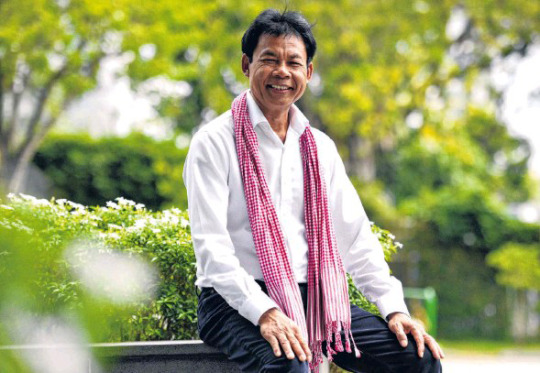
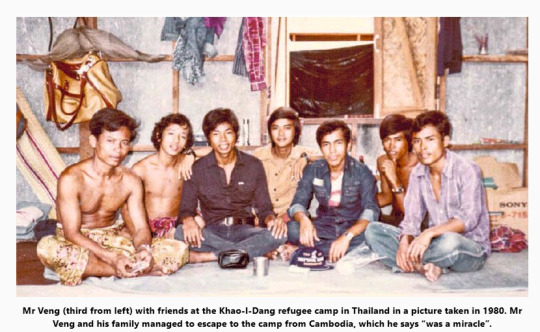
He Starved, Suffered and Nearly Died, but Never Lost Hope Genocide survivor went on to be a Cambodian minister, and seeks now to inspire the young The Straits Times 22 Mar 2020 Wong Kim Hoh Senior Writer [email protected] PHOTOS: KELLY HUI, VENG SEREYVUTH Veng Sereyvuth has a passionate belief.
“You are born with the power to dream, to make choices, to craft your destiny. No one except you can steal that from you,” he says.
Before you dismiss that as a platitude, consider who he is and what he has gone through.
The 61-year-old survived the Cambodian genocide during which more than two million people died under the Khmer Rouge, which was in power between 1975 and 1979, led by Marxist leader Pol Pot.
His life has been both a melodrama and a potboiler: a village boy who became a cyclo driver, a smuggler, a prisoner, a refugee, a political science graduate and, eventually, a politician who served as Cambodia’s minister for tourism and minister for culture.
Along the way, he starved, suffered and stared death in the face on several occasions. But through it all, he never gave up hope.
Today, he is a businessman and educationist; he has built hotels and other properties and is chairman of the board of trustees at the Pannasastra University of Cambodia, a private university in Phnom Penh which provides an English-based education.
Mr Veng does not have the statesman-like gravitas one expects of someone who has spent more than two decades as a senior minister.
Dressed in jeans and a white shirt with a cotton krama (a traditional Cambodian scarf) around his neck, he radiates approachability and joviality.
He was in Singapore recently to put the finishing touches to No One Born Poor: Prisoner, Politician, Pioneer, a book about his life published by Write Editions and available at major bookstores in June.
Calling the book a tribute to the country he loves, he hopes that his story of “challenging life, confronting the unknown and embracing its ups and downs” will give hope to many people, especially the young.
He was born the second of six children in the remote village of Prey Deoum Thieng in the Cambodian province of Prey Veng.
His father was a teacher and his mother ran a provision shop. The couple later separated, and Mr Veng and his siblings were raised by his mother, whom he describes as a “commander-in-chief” and the strongest person he knows.
Life in the village was idyllic. He loved going to school, spurred on by his mother who fervently believes that education is not just the ticket to a better life, but also makes one a better person.
But civil strife soon rocked the country when a military coup overthrew head of state Prince Norodom Sihanouk in 1970.
The Khmer Rouge started becoming more powerful; they were communist revolutionaries who saw religion, education and freedom as dangerous.
Realising that life in their village was getting untenable, Mr Veng’s mother decided to uproot her brood to Phnom Penh in 1972.
She decided to do it first with Mr Veng, who was then just 12, before coming back for her other children.
Because the Khmer Rouge killed villagers who tried to flee for the city, mother and son escaped through rice fields in the dark of the night before taking a boat across the Mekong to get to Phnom Penh.
“It was a real ordeal, a life-anddeath situation. I saw dead bodies, and heads on bamboo poles,” recalls the amiable man whose other siblings arrived in the city several weeks later.
With no income from a provision shop to feed her brood, his mother started selling noodles.
Mr Veng continued his education at a French Catholic school, but sold bread to office workers before classes began and became a cyclo – a three-wheeled taxi – driver after school ended.
Life was tough but as he writes in his book: “I didn’t see myself as a cyclo driver, as it was not my final mission in life. It could not be. It must not be. The cyclo was a tool to meet two needs: to fill my stomach and pay for my education. Nothing more, nothing less.”
In 1975, the Khmer Rouge won the civil war and captured Phnom Penh. They emptied the cities, forcing millions of Cambodians, including Mr Veng’s family, back to the countryside.
Not long after they began their trek to a village in Prey Veng, Mr Veng’s mother told him to go back to their Phnom Penh home to get a 20kg pot of preserved fish because it would provide sustenance for their month-long journey.
But the then 15-year-old was stopped by soldiers who ordered him to turn back. When he moved forward, a soldier pointed a gun at him. Mr Veng begged for permission to get his pot of fish. To his surprise, the soldier let him through.
The episode taught him one thing: You need courage and conviction for everything you do in life.
“For me, it means protecting the preserved fish, at all costs, for my family.”
The Khmer Rouge were brutal in their quest to set up an agrarian utopia, torturing and killing intellectuals and anyone else they considered a threat to communism.
Mr Veng and his brothers escaped death, but, like millions of their countrymen, were sent to slave at labour camps.
The Khmer Rouge lost their grip on power in 1979 when Vietnamese forces took control of Phnom Penh.
It was not just another chapter in the country’s history but also in his life. To help his family survive, he became a smuggler, sneaking to the Thai border to buy cartons of cigarettes – apparently more valuable than money then – which he would trade or sell.
It nearly cost him his life on several occasions. Once, he was denied entry at a checkpoint by soldiers who wanted his cigarettes.
To get across, he made eye contact with people on the other side of the metal barrier and told them in a low voice to leave a gap for him to pass through when the barrier was lifted.
He made a dash for it on his bicycle, pedalling furiously as the sound of bullets reverberated behind him. By the time he stopped, his feet were bloody from the desperate pedalling.
Asked if he has ever thought about death, he says with a laugh: “When you live in a structured and orderly society, you think about things like that. But when you live in hell...”
He continues: “I had no choice. I just did what I needed to do to feed the family. You get out of a situation first and get scared later. You deal with death only when it comes.”
His family cried each time he went away because they were worried he might not come home.
“Every trip was three weeks or a month long. Things could happen: sometimes you could not get the goods, sometimes there were shootings, sometimes you just could not get back i nto Cambodia. I had stayed in forests where I just ate what I had and what I could find.”
Hunger was a constant companion. “You can check with your doctor friends but when you’re really hungry, your stomach feels like it’s being cut into pieces with a knife,” says Mr Veng, who was once so weak from hunger he had to be propped into a sitting position at mealtimes with a rope tied to the ceiling.
The year 1979 also marked one of the lowest periods in his life.
Soldiers stopped him on his bicycle while he was riding home to Prey Veng with a sack of 200 bicycle spokes he hoped to sell. They accused him of sending the spokes to the Khmer Rouge and threw him into a dark prison for a month.
Then, one day, he was taken blindfolded to the Mekong. He felt a gun muzzle on his left cheek, and heard the weapon being cocked as he was asked if he was part of the Khmer Rouge.
He just blurted: “I’m a student.” That split second of telling the truth, he says, spared him from getting his head blown off.
The era of the Khmer Rouge might have been over but fear and uncertainty still blanketed the country.
Overwhelmed by the hopelessness, he and his family decided to “turn this game of life around” and take the big risk of escaping to the Khao-I-Dang refugee camp – set up in late 1979 and run by the Thai Interior Ministry and the United Nations High Commissioner for Refugees – across the Thai border.
They split into two groups. He and two of his sisters set out first. The plan was to reunite with his mother and other siblings at the refugee camp.
Thousands had died undertaking the weeks-long journey which was fraught with many dangers, from landmines to trigger-happy soldiers. Mr Veng and his two sisters moved mostly at night to avoid getting caught.
They made it, and so did the rest of the family.
“It was a miracle. The border stretched for hundreds of kilometres but we managed to find one another,” he says.
They stayed in the camp for one year.
“It was a completely different life. There were no guns and no fear. You mingled with other people and walked about freely in the camp. You could sleep and wake up, a free man.”
Nearly a year later, the family were told that they would be going to New Zealand.
“It was surreal, we were speechless,” recalls Mr Veng, who landed in Auckland with his family in September 1980.
There, he worked at several places including a printing firm and an ice-cream shop while attending English, maths, economics and accounting classes at a polytechnic.
In 1984, he got accepted into the University of Victoria on a special admissions scheme. It was hard because he had not mastered the English language, but his will bulldozed through the obstacles, and he graduated with a degree in political science in 1987.
He never forgot Cambodia though. For a year, he was haunted by nightmares of what he had lived through. To exorcise his demons, he shared his story openly with his lecturers and classmates.
He also joined the secretariat of the Khmer Association in New Zealand to help new refugees adapt to life in the country. The association also built the first Cambodian pagoda in the country.
The urge to return to help rebuild his homeland was “instinctive”.
“It’s my country. It’s where I came from and I wanted to give back. Gratitude is my attitude,” says Mr Veng, who spent more than a year working as a taxi driver – “you can make a lot of money” – before heading for Bangkok in 1989.
He could not enter Cambodia because the country was still in political turmoil. In Bangkok, he volunteered with The National United Front for an Independent Neutral and Cooperative Cambodia and worked with refugees along the Thai border.
In 1993, he took part in Cambodia’s general election and became a member of Parliament as well as minister for tourism, a post he held until 2004.
“It was one of my top achievements,” says Mr Veng, who was also minister to the council of ministers and minister for culture.
Among other things, he chaired an initiative to step up the flow of tourist dollars in the region, resulting in the signing of the Asean Tourism Agreement in Cambodia in 2002.
Except for two of his sisters, Mr Veng’s mother and other siblings have also returned to live in Cambodia. He has a son, 22, who is studying public policy at the University of Victoria; his former wife died in an accident several years ago.
The congenial man, who holds both Cambodian and New Zealand citizenships, went into business after leaving politics in 2013 but focuses a lot of his attention on education for young Cambodians.
Mr Veng, who often gives talks to inspire others, says his philosophy in life is simple.
“I believe that on the canvas of humanity, we are to paint goodness: the able extending goodness to those without hope, the distressed and the needy.”
Chairman of the Board: H.E. Veng Sereyvuth held various ministerial positions in the Royal Government of Cambodia since 1993, including co-minister of Council of Ministers, Senior Minister of Tourism, and Senior Minister of Art and Culture. H.E. Veng Sereyvuth received a Business Administration's degree from Victoria University Wellington, New Zealand;
0 notes
Text
Doctor Who: Why Each Doctor Regenerated | Screen Rant

Here are all the monsters, injuries and mishaps that have caused the Doctor to regenerate in Doctor Who. Recasting a title character can be risky business for most TV and film franchises, but for Doctor Who, it's an integral part of the mythology. In a unique trick, Time Lords have the ability to cheat death, renewing every cell in their bodies when they are gravely sick or fatally wounded. From a real-world point of view, regeneration provides Doctor Who with a legitimate way of continuing the show when the lead actor has had enough or, in some cases, is given the boot.
The rules and lore surrounding regeneration have changed and evolved over the years, with the term itself not introduced until the era of the Third Doctor. A Time Lord can regenerate a total of twelve times, but can also be afforded a brand new regeneration cycle by the Time Lord council - a gift bestowed upon the Doctor in Matt Smith's final episode. More recent additions to the regeneration concept have shown that the process can alter gender and skin color, and Time Lords also have the option to refuse regeneration, should they wish.
Related: Doctor Who: How Jack Harkness Becomes The Face Of Boe
Regeneration is one of Doctor Who's most innovative and useful concepts, but the process has been wildly different on almost every occasion. The Doctor's regenerations have also been caused by a wide variety of different threats, some considerably more dramatic than others.

Doctor Who's early creative team cooked up the idea of regeneration after William Hartnell, the original actor to bring the Doctor to life, began to struggle with memorizing scripts and delivering lines. Seeking to continue the show with a younger star, the Doctor would "renew" himself and transform into a completely different man. Throughout the First Doctor's final adventure, "The Tenth Planet," the Time Lord appears weakened and frail, sometimes being forced to rest as he battles the Cybermen for the first time.
After helping save Earth from the deadly emergence of the Cybermen's home planet, the Doctor wearily returns to his TARDIS and collapses, regenerating into his Second form. Although not explicitly addressed, the generally accepted reason for the First Doctor's regeneration is old age. The Doctor is already several hundred years old before the start of Doctor Who and his recent adventures have evidently taken a toll on his ailing body.

When it came time for Patrick Troughton to move on from Doctor Who, the "old age" excuse wasn't going to work, with the Second Doctor not only younger and more cheerful than his predecessor, but far more sprightly. Instead, Doctor Who introduced another element to the mythology that would form a core part of the franchise for decades to come: the Time Lords.
Although clearly of alien origin, the Doctor's background had never been previously addressed, but "The War Games" revealed his heritage and established the Time Lord code of non-interference. The Doctor was wildly in violation of said code, but a dire situation forced him to call for aid from his Gallifreyan kin, even knowing that punishment inevitably awaited. Charged with various counts of meddling, the Doctor was forced to give up his current regeneration and was exiled to Earth. Most heartbreakingly of all, the Second Doctor's companions were forced to completely forget their adventures in the TARDIS.

Jon Pertwee's Third Doctor was the most human version yet, driving a jaunty car, joining U.N.I.T. and taking down baddies with his Venusian aikido. However, the Third Doctor's eventual regeneration was definitively alien in nature. Having previously stolen a blue crystal from the planet Metebelis 3 for study, the Doctor discovers that a race of mutated giant spiders have taken over and are seeking the return of their crystal. While this sounds like a reasonable request, the spiders seek to use the crystal as part of a larger plan to dominate the galaxy.
Always a step ahead, the Doctor knows that the crystal's overwhelming power will kill, not enhance, the spiders' leader, and handing back the stolen crystal will therefore save the day. Problematically, the spider's cave is teeming with lethal radiation but, in a noble effort to protect the universe, the Doctor ventures into the cave of the Eight Legs and hands over the crystal, defeating the spiders. Upon exiting, Pertwee's Doctor barely has enough strength to pilot the TARDIS back to Earth and regenerate.
Related: Doctor Who: River Song's Timeline Explained

Tom Baker's regeneration into Peter Davison is unique in that it requires the cooperation of a mysterious third party. In "Logopolis," the fabric of reality is beginning to unravel and the Doctor is forced to team up with the Master to save the universe. Although the unlikely duo succeed, the always-opportunistic Master threatens to restart the collapse unless control of the universe is handed over to him. Ascending a high radio tower, the Doctor manages to disconnect the dish broadcasting the Master's ultimatum. With the Master tilting the tower's gantry, however, the Doctor falls to the ground below, triggering his next regeneration.
Having been followed by a strange white figure known as "the Watcher" for the entire story, the dying Fourth Doctor reveals his stalker to be his own future incarnation, and the two Time Lords merge together during the regeneration process. Why the Watcher is a necessary component of this particular regeneration isn't clear, but wider Doctor Who media suggests that seeing a Watcher is an occasional phenomenon that befalls Time Lords who are nearing a regeneration.

In his final story, Peter Davison's Fifth Doctor stumbles across a battle between various political and military factions for a valuable natural mining resource called Spectrox on the planet Androzani. While inspecting the Caves of Androzani, the Doctor's assistant, Peri Brown, becomes entangled in an unknown sticky substance that is later revealed to be unrefined Spectrox. Both Peri and the Doctor make skin contact with the Spectrox and soon begin to exhibit symptoms of poisoning. The Fifth Doctor embarks on a mission deep into the caves to find the only known antidote to their condition and although he succeeds, he can only retrieve a single dose, curing Peri at his own expense.

Colin Baker's departure from Doctor Who and the BBC was an acrimonious one, and this resulted in the most abrupt regeneration sequence ever seen on the series. At the very beginning of the season 24 premiere, "Time And The Rani," the TARDIS comes under attack from the planet Lakertya at the Rani's command. After a barrage of energy blasts, the TARDIS is caught and boarded, where the Rani witnesses the Sixth Doctor regenerate into the Seventh.
The exact cause of Colin Baker's regeneration isn't made clear, and fans can only assume that he sustained severe injuries following the assault upon his ship, although subsequent audiobooks have sought to fill in the gaps of the Sixth Doctor's demise.

The classic series of Doctor Who was cancelled while Sylvester McCoy's Seventh Doctor still held the keys to the TARDIS, but his story continued in the 1996 TV movie, which offered a regeneration sequence grounded in stark realism. Thanks to the Master, the Doctor's TARDIS unintentionally materializes in 1999 San Francisco, right in the center of a shootout between two rival gangs. The Doctor's sudden appearance spares the life of a young man named Chang Lee, but the Time Lord himself takes a barrage of bullets.
With dual hearts and Gallifreyan physiology, the Doctor actually survives the shooting, but is killed by well-meaning surgeons as they attempt to open the Doctor up and save his life. Aimlessly fiddling in a Time Lord's body, Dr. Grace Holloway kills the recovering Doctor and he later regenerates in the building's morgue.
Related: Doctor Who Has Different Opening Credits In The US To The UK
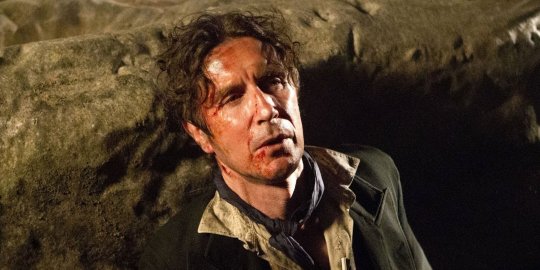
With his only appearance coming in the ill-fated movie, fans were left guessing as to how Paul McGann's Eighth Doctor regenerated. Answers finally arrived in time for Doctor Who's fiftieth anniversary in the short film, "The Night of the Doctor." Written by Steven Moffat, "The Night of the Doctor" sees the Time Lord desperately trying to avoid partaking in the burgeoning Time War spreading across the universe.
Travelling alone, the Doctor comes across Cass, the pilot of a doomed ship, and attempts to save her life. Unusually for Doctor Who, Cass refuses, not wanting to be saved by one of the Time Lords currently destroying galaxies with their endless war against the Daleks. For his part, the Doctor refuses to leave and with both passengers remaining stubborn until the end, the ship crashes, killing both. Fortunately, the Doctor seems to have landed on Karn, a former colony of Gallifrey introduced in the Fourth Doctor's era. The planet's natives, known as the Sisterhood, give the Eighth Doctor an elixir that will supposedly allow him to fully control the characteristics of his next regeneration.
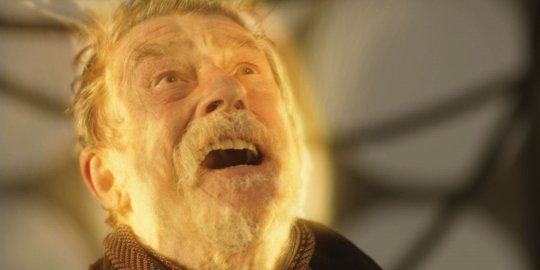
Appearing in the 50th anniversary special, John Hurt's War Doctor was a fleeting but welcome addition to Doctor Who canon and was seen regenerating at the end of "The Day of the Doctor." Making reference to his body "wearing a bit thin," the War Doctor's regeneration can be attributed to old age, for the first time since 1966. However, it could also be argued that the War Doctor's function was merely as a soldier in the Time War, and once that conflict was over, so was the War Doctor himself.

For the second time, the Doctor sacrifices himself to save an assistant. Under assault from the Daleks, the Ninth Doctor sends his assistant, Billie Piper's Rose Tyler, away in the TARDIS for her own safety. Rose refuses to accept being unable to help the Doctor and strives to find a way back to him, eventually absorbing the heart of the TARDIS and gaining God-like abilities. Rose saves the day but is rapidly becoming unstable, forcing the Doctor to absorb the power himself via a painfully cheesy kiss.
After restoring the TARDIS energy back to its original location, the Doctor begins to feel the effects of saving Rose, later claiming that no Time Lord is supposed to take in that much power. He promptly regenerates into David Tennant.
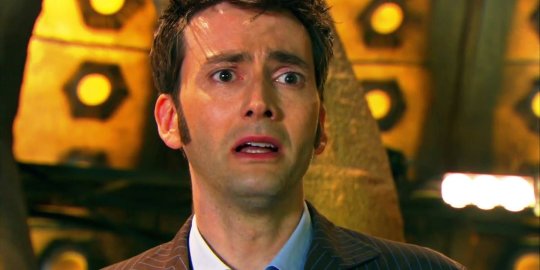
David Tennant's demise was a long time coming in Doctor Who, with the "he will knock four times" warning coming well in advance of the Tenth Doctor's final episode. Viewers were misled into believing this prophecy would be fulfilled by the Master or Rassilon but, in the end, it was Bernard Cribbins' Wilf that heralded the end of the Tenth Doctor's reign.
Related: Doctor Who's Dalek Redesign Is Perfect For The Jodie Whittaker Era
During the dramatic final confrontation of "The End of Time," Wilf selflessly frees an innocent worker from a two-man radioactive chamber, locking himself in until another person can take his place. When the dust settles, the Doctor hears the gentle knocking and realizes he must sacrifice his own life to save Wilf, absorbing a deadly dose of radiation in the old man's stead. After a whirlwind tour of his old friends, the Tenth Doctor delivers an emotionally devastating final line and regenerates in explosive fashion.
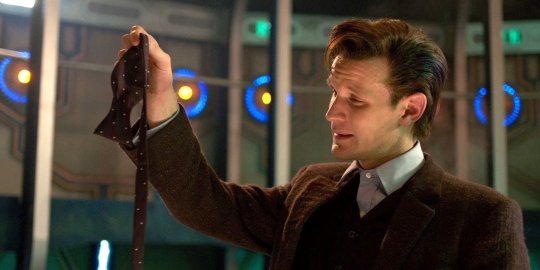
For the third time in his life, the Doctor died of old age when his Eleventh incarnation resolved to protect the planet of Trenzalore for hundreds of years, guarding a crack that separated the hidden planet Gallifrey from the amassing Dalek fleet waiting to resume the Time War. And since the Tenth Doctor had avoided a regeneration through the use of a preserved severed hand, Smith's Doctor was already out of lives.
After deterring the potential conflict for the remaining years of his Eleventh iteration, the Doctor consigned himself to a death of the permanent kind, but was spared this fate by the Time Lords, who granted him a brand new regeneration cycle.

Peter Capaldi's regeneration was special in the sense that it was triggered by damage accumulated throughout the Twelfth Doctor's final adventure. Coming up against a powerful army of Cybermen and two incarnations of the Master, the Doctor's first major injury arrives in the form of Cyberman electrocution. Although the Doctor survives, he spends several weeks recovering from the attack and is unable to heal a cut on his forehead, with golden regeneration energy beginning to brew from his hands.
Delaying his forthcoming renewal, the Doctor later engages multiple Cybermen in combat and endures several energy blasts before detonating an explosion that not only wipes out his mechanical enemies, but puts paid to any chance the Doctor had of recovering from his previous wounds. Capaldi's regeneration marks a rare occasion in Doctor Who history that a major villain has succeeded in directly killing the Doctor.
More: Doctor Who Season 11 Saved The Show From Steven Moffat's Mistakes
Doctor Who season 12 premieres in 2020 on BBC and BBC America.
source https://screenrant.com/doctor-who-every-regeneration-reason/
1 note
·
View note
Text
Emmanuel Macron staged a punk coup on the Champs-Élysées
http://bit.ly/2vA0KRV
Picture this: July 14, Paris. On the Champs-Élysées, the promenade that runs like an aorta through the heart of France’s capital.
An assembly of dignitaries, army commanders and security agents has gathered on stage to watch a grand military parade commemorating an event of profound importance to the history and psyche of the French people: the storming of the Bastille prison, which spurred the country’s 1789 revolution.
As it happens, this July 14 also marks the 100th anniversary of the entry of American troops into the first world war. And so, heading up the party, sit two radically different male figureheads: Emmanuel Macron and Donald Trump.
Though superficially connected by being political outsiders who made unconventional moves to win national elections, the two presidents – one French, one American – are opposites in character.
To the American’s fearful nationalism, his counterpart advances a progressive and proud sense of country, envisioning a France that makes “our planet great again”.
Where one produces a litany of online abuse, the other launched a rollcall of MPs that brings unprecedented diversity to the French parliament. Where Trump is relentlessly outlandish, Macron is unwavering and incisive.
On Bastille Day, the two men were flanked by their wives. While both are in cross-generational partnerships, commentaries on Macron’s marriage have exposed the deep misogyny that still courses through some parts of society, a misogyny that Trump has himself manifested. As a man, Trump is driven by a rampant ego: the self as brand.
Macron, on the other hand, projects a sense of self underpinned by intelligence, that is, a capacity for learning and reason. And it is this intelligence, and the particular boldness that it inspires, that produced this double-take moment: the French military band in full ceremonial attire, standing at attention before the Bastille Day stage and delivering a bravura rendition of the pop anthem Get Lucky by the French electronic duo Daft Punk.
Artful politics
It takes a while for the medley to build. As the tune becomes discernible – with tuba, trumpet, cymbal, snare and bass drum – it is clear that a coup of artful politics is taking place.
The band intones the chords of this global nightclub anthem in an arrangement that splices the usual military moves with strange and wonderful quick-steps on the Elysées. Carefully choreographed camerawork captures their stiff-chic movements, which both reinforce the music and draw out more meaning beneath the surface.
On the stage, as the men witnessed the ceremonial manoeuvres, their demeanour could not have been more different.
Macron, poised and irreverent, embodies the sense of independence that underlies France’s strong intellectual history. Is there in his attitude, perhaps, a fine thread of the very same spirit of revolt that gave rise to républicanisme, the political philosophy that Bastille Day marks?
Trump, by contrast, appears increasingly unnerved as the delight of the people around him grows. He senses something is afoot but cannot grasp the situation. His out-of-place air is just what might be expected of a capitalist hero who traded real-estate notoriety for celebrity status, and then cashed this in for political power.
Describing these men this way may seem to mythologise them. Yet the evolution of myth and its interaction with history is precisely what this event underlined.
Bastille Day medley
The centrality of myth-making in discourses of social life – of which history is one – is highlighted by the French thinker Jacques Rancière’s observation that, “the foundation of the foundation is a story, an aesthetic affair”.
So, too, is politics, with its concepts of democracy and public space, and its practice in the Greek tradition of the agora. Following on from French structuralism, the study of language and culture has examined myth not as falseness in the face of reality, but rather as a very particular way in which symbols combine with ideas to promote specific values in a given era.
Roland Barthes was a leading figure in this field and in his 1957 essay collection Mythologies, he combines storytelling and critique to explore the myths of mass culture.
“Bastille Day Medley” would make a worthy entry to a 21st-century edition of the work, along with updated versions of his original essays on “The World of Wrestling” and “Photography and Electoral Appeal”.
French theorist Jean Baudrillard, too, offers insight into the world of celebrity presidency, fake news hype, social-media reality, and historical amnesia that haunt these times.
In his 1981 treatise Simulacra and Simulation, he argues that in the pre-modern world a clear relationship existed between objects, symbols and their use-value in rituals and social practice. In the industrial era of mass reproduction – as Guy Debord’s Society of the Spectacle outlined – there ensued a breakdown in the value of real and the represented, as commodification heightened the value of appearances over substance.
Today, thanks to processes of multiplication, imitation and circulation, symbols need not be anchored to anything to have currency: simulacrum is the new real. The Trump camp often trades in precisely such simulacra, and its dismissal of reflective thought and critique as “elite” plays into this.
And so the Daft Punk medley is striking because, in its combination of the apparent opposites of military and pop culture, it marks an historic looking back that is also a looking forward. Around the world, viewers witnessed a re-anchoring of the chaotic world of messages – the world of Trump – in a present that has symbolic and political substance.
The significance of this was not lost on many of the dignitaries on stage, as the cameras revealed.
Historical substance
Nor, in this situation, could onlookers fail to appreciate Macron’s sense of timing and keen grasp of the “aesthetics of politics”. In positioning Trump in Paris, on the Bastille stage, Macron artfully revealed with full decorum the hollow figurehead of Trump, an oligarch who radiates the myth of the self-made man.
At an earlier press conference with the two presidents, it was amusing to observe Macron’s raised eyebrows as Trump tried to conjure a sense of historical substance for himself in declaring that “our countries are bound by revolution”.
The rhetoric felt as it was, empty.
This vacuousness was brought to bear on the Bastille stage. During the parade, Trump saluted the troops. In the face of complex national histories that he is unlikely to grasp, and given his habit of aesthetic excess, the gesture looked like a pantomime move: Trump-pomp™.
As the Daft Punk medley unfolded, Trump’s attitude shifted from superiority to confusion and then sulkiness. He resembled nothing so much as Ubu Roi, the infantile king in French surrealist Alfred Jarry’s 1896 play.
Macron did not just get lucky here. This orchestration of an historical moment and a public event was thoroughly considered.
Get Lucky was not an ironic gesture. It did not deflect. It was not superficial. Instead, the medley made several often-conflicting statements at once, offering both entertainment and critique, gravitas and humour. In embodying a progressive vision for France while casting Trump as a bombastic, outmanoeuvred onlooker, Macron’s staging of politics was a coup de grâce, as subtle as it was potent.
Julie Louise Bacon does not work for, consult, own shares in or receive funding from any company or organisation that would benefit from this article, and has disclosed no relevant affiliations beyond the academic appointment above.
0 notes